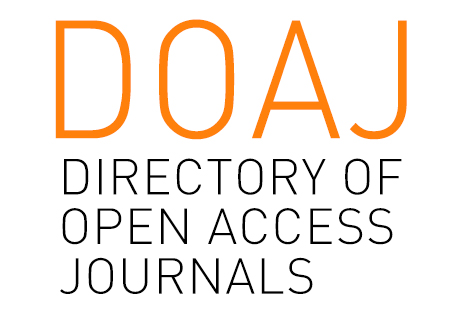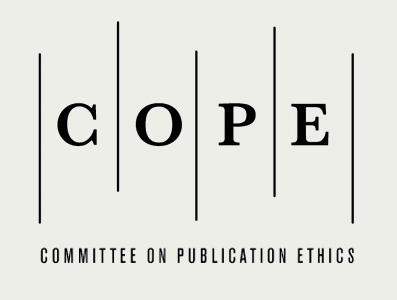О проблему употребе конјунктива код србофоних студената италијанског језика: анализа грешака из угла прагматике
Ана В. Петровић, Универзитет у Крагујевцу, Филолошко-уметнички факултет, Крагујевац, Србија, имејл: ana.petrovic@filum.kg.ac.rs
Јована Д. Базић, Универзитет у Крагујевцу, Филолошко-уметнички факултет, Крагујевац, Србија
Иновације у настави, XXXVIII, 2025/3, стр. 143–154
| PDF | | Extended summary PDF |
DOI: 10.5937/inovacije2503143P
Резиме: Комплексни систем италијанског конјунктива неретко представља препреку у учењу језика, превасходно код србофоних студената, будући да српски језик такав начин не препознаје у свом морфосинтаксичком систему. Стога је први циљ овог рада сагледавање употребе конјунктива у писаној продукцији на италијанском језику код студената чији је матерњи језик српски. Истраживање је спроведено на узорку који су чинили студенти Филолошко-уметничког факултета у Крагујевцу (енг. pre-test). Спроведена анализа у првој фази показала је евидентно изостављање облика конјунктива, те истовремено настојање да се уместо датих облика користе други начини, попут индикатива или кондиционала. Добијени резултати утрли су пут другој фази истраживања у којој је спроведен и тест попуњавања празнина (енг. cloze-test) ради утврђивања облика и типова конјунктива који у већој мери представљају проблем у исказивању ставова, мишљења, сумњи, недоумица и личне опредељености према пренесеном исказу. Најзад, резултати и анализа грешака у употреби конјунктива у италијанском језику код србофоних студената у овом истраживању представљају почетну тачку у разумевању узрока ограничености употребе овог глаголског начина, као и могућих приступа и метода применљивих из морфосинтаксичке, али и прагматичке перспективе. Они могу допринети побољшању флуентности студената италијанског језика кроз употребу широког опсега расположивих стратегија, односно доступних модела живог језика заснованог на систему масовних медија.
Кључне речи: конјунктив, анализа грешака, италијански језик, Л2, српски језик
Summary: The complex system of the Italian subjunctive often poses a challenge in language learning, especially for serbophone students, since the Serbian Language does not recognize this mood in its morphosyntactic system. Thus, the primary goal of this paper is to examine the use of the subjunctive in written production in Italian by students whose native language is Serbian. The research was conducted on a sample consisting of students of the Faculty of Philology and Arts in Kragujevac (pretest). The analysis conducted in the first phase showed a clear omission of subjunctive forms, with a simultaneous attempt to use other moods such as the indicative or conditional instead. The obtained results paved the way for the second phase of the research, which included a cloze-test to determine the forms and types of subjunctive that pose a greater problem in expressing attitudes, opinions, doubts, uncertainties, and personal commitment to the conveyed statement. Finally, the results and error analysis of the use of the subjunctive in Italian by serbophone students in this study represent a starting point in understanding the causes of the limited use of this mood, as well as possible methods and applicable strategies that could improve, from a morphosyntactic and pragmatic perspectives, the fluency of the Italian Language students using a wide range of available live language exponents based on the mass media system.
Keywords: subjunctive, error analysis, Italian language, L2, Serbian language
Литература:
- Berruto, G. (2020). Sociolinguistica dell’italiano contemporaneo. Carocci editore.
- Bicciato, S. (2022). Materials and resources for teaching Italian pragmatics. Italiano LinguaDue, 13(2), 624– 644. https://doi.org/10.54103/2037-3597/17160
- Bratić, I., i Vukšić, M. (2023). Konjuktiv i njegova uloga u izražavanju subjektivnosti u talijanskom jeziku. Zbornik radova Veleučilišta u Šibeniku, 17(1–2), 165–177.
- Ceković, N. (2012). Difficoltà di apprendimento dei tempi e modi verbali dell’italiano L2 da parte degli apprendenti serbofoni. Philologia, 10(1), 1–11. https://doi.org/10.18485/philologia.2012.10.10.1
- Corder, S. P. (1967). The Significance of Learners’ Errors. International Review of Applied Linguistics in Language Teaching, 5, 161–170.
- Gauci, P., Chia, E., & Caruana S. (2016). L’insegnamento della pragmatica e la formazione degli insegnanti di italiano a Malta. In Santoro E., & Vedder I. (a cura di). Pragmatica e interculturalità in italiano lingua seconda (pp. 67–78). Franco Cesati.
- Ellis, R. (1994). The Study of Second Language Acquisition. Oxford University Press.
- Fraser, B. (2010). Pragmatic Competence: The Case of Hedging. In New Approaches to Hedging (pp. 15–34). Emerald.
- Grandi, N., & Zucchini, E. (2001). Tratti non standard nella scrittura formale giovanile. Un’indagine sulle scuole secondarie di Bologna. Rassegna Italiana di Linguistica Applicata, Anno 53, (3), 121–138.
- Hendriks, B., Van Meurs, F., & Kakisina, B. (2023). The effects of L1 and L2 writers’ varying politeness modification in English emails on L1 and L2 readers. Journal of Pragmatics, 204, 33–49. https://doi.org/10.1016/j.pragma.2022.12.006
- Krashen, S. D. (1981). Second language acquisition and second language learning. Pergamon Press, Inc.
- Lenneberg, E. H. (1967). Biological Foundations of Language. Wiley.
- Morsy Tawfik Ali, M. (2021). Difficoltà nell’apprendimento del sistema verbale italiano da parte di studenti egiziani. Educazione Linguistica. Language Education, 10(2), 279–300.
http://doi.org/10.30687/ELLE/2280-6792/2021/02/006 - Pietrandrea, P. (2005). Epistemic Modality. Functional properties and the Italian system. John Benjamins Publishing Company.
- Santipolo, M. (2014). L’impiego dei materiali autentici per lo sviluppo della competenza sociolinguistica: rifessioni teoriche e spunti operativi. Cultura & Comunicazione, 5(5), 15–22.
- Selinker, L. (1972). Interlanguage. IRAL: International Review of Applied Linguistics in Language Teaching, 10, 209–231. https://doi.org/10.1515/iral.1972.10.1-4.209
- Terić, G. (2009). Sintaksa italijanskog jezika. Beograd: Filološki fakultet.
- Wandruszka, U. (1991). Frasi subordinate al congiuntivo. In L. Renzi & G. Salvi (Eds.). Grande grammatica italiana di consultazione. Volume II: I sintagmi verbale, aggettivale, avverbiale. La subordinazione (pp. 415–481). Il Mulino.
Copyright © 2025 by the publisher Faculty of Education, University of Belgrade, SERBIA. This is an open access article distributed under the terms of the Creative Commons Attribution License (CC BY 4.0) (https://creativecommons.org/licenses/by/4.0/), which permits unrestricted use, distribution, and reproduction in any medium, provided the original paper is accurately cited.





